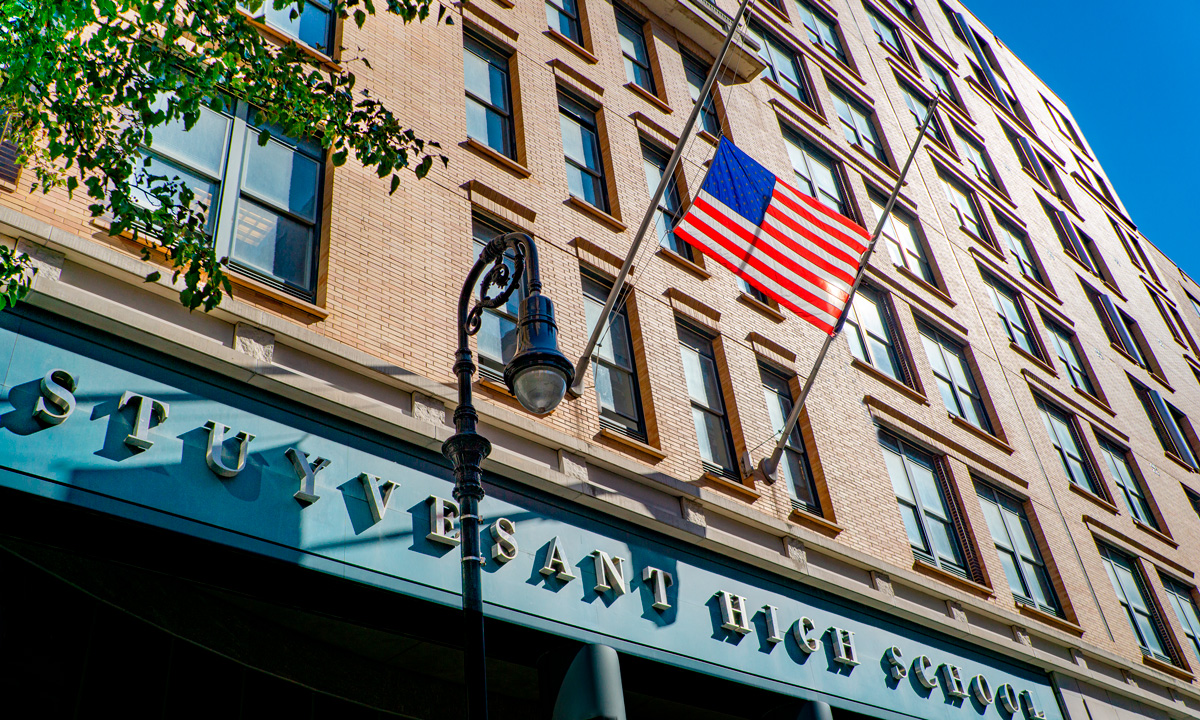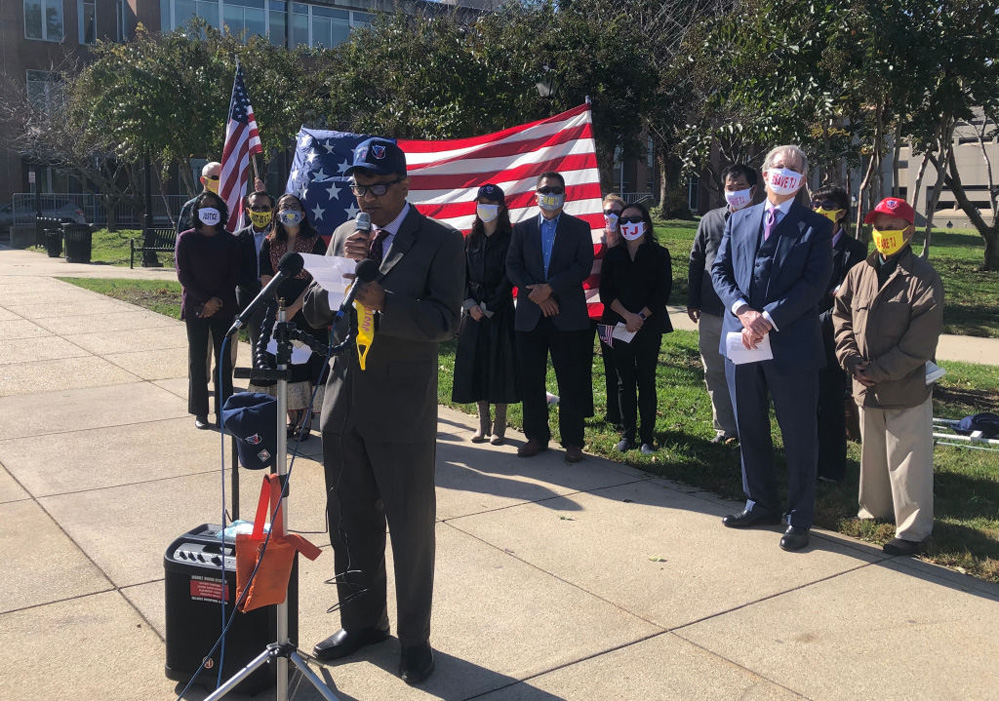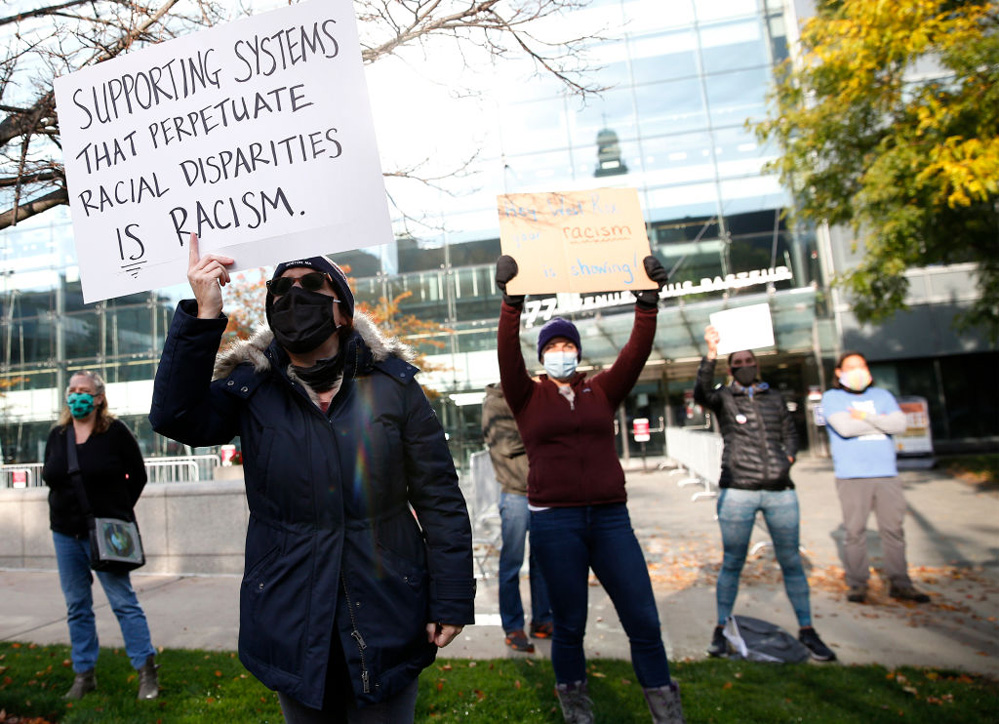After Harvard Ruling, Will Admissions Policies at Elite K-12 Schools Be Next?
A right-leaning law firm believes the decision banning race-conscious admissions bolsters their cases against selective schools in four districts.

Get stories like this delivered straight to your inbox. Sign up for The 74 Newsletter
A landmark decision by the U.S. Supreme Court to ban race-conscious admissions at colleges could apply more broadly to a handful of federal cases that center on efforts to diversify selection at elite K-12 schools.
“What cannot be done directly cannot be done indirectly,” Chief Justice John Roberts wrote in the majority opinion in the case against Harvard University.
Several conservatives are glomming on to that quote as a warning to school districts that rely on admission criteria they claim is race-neutral even as they pursue a goal of increasing the number of Black and Hispanic students they accept.
“Eliminating racial discrimination means eliminating all of it,” said Erin Wilcox, an attorney with the Pacific Legal Foundation. The right-leaning nonprofit law firm represents families in four East Coast districts suing over policies that determine who gets into competitive schools.
This summer, the firm will ask the Supreme Court to hear its case against the Fairfax County Public Schools in Virginia over changes to the admissions policy at the prestigious Thomas Jefferson High School for Science and Technology.
“Treating students based on their experiences as individuals, not on the basis of race, is what we’ve been fighting for,” Wilcox said.
Pacific Legal, part of the conservative State Policy Network, is making the same argument on behalf of plaintiffs in Montgomery County, Maryland, New York City and Boston. In revising their selection processes to pursue greater equity, the complaints say district leaders openly expressed a desire to limit the numbers of white and Asian-American students attending those schools.
Advocates for racially balanced schools, however, call the firm’s argument far-fetched and maintain there’s still legal backing for policies that take socioeconomic status into account when admitting students. K-12 leaders, they argue, shouldn’t scale back those efforts out of concern for what the courts may do.
“Rather than try to guess how this [ruling] affects them, I think schools and districts should continue to promote diverse, equitable learning environments for students because research tells us that’s what’s best for kids,” said Stefan Lallinger, executive director at Next100, a progressive think tank affiliated with The Century Foundation.
Racial segregation is “pernicious,” he said, and with the end of affirmative action in college admissions, K-12 schools still need tools to address educational inequities.
“For hundreds of years in some cases, selective institutions have discriminated against people of color,” he said. “If the Pacific Legal Foundation’s argument is that there are no legal remedies available … we’re really in trouble.”
‘Proxy discrimination’
Amid the racial reckoning following George Floyd’s murder in 2020, in which districts nationally tried to expand educational opportunities for minority students, Fairfax leaders eliminated a rigorous test for applicants and a $100 fee. They reserved seats at the school, known as TJ, for the top 1.5% of 8th graders in each middle school.
“We firmly believe this admission plan is fair and gives qualified applicants at every middle school a fair chance of a seat at T.J.,” John Foster, an attorney for the Fairfax County Public Schools, said in May when the U.S. Court of Appeals for the 4th Circuit ruled against Coalition for TJ, the plaintiff in the case.
But that’s no consolation for families who thought their children had a good shot of being admitted to TJ under the old system. Stephanie Lundquist-Arora, a member of the coalition, said her oldest son, who is half Asian, did well in accelerated math classes and took three semesters of engineering.
“He should have been a competitive candidate,” she said.
But after making the waitlist, his application for this fall was rejected. Lundquist-Arora has two younger sons — one of which is taking honors algebra in seventh grade — but she’s concerned they could also be shut out of what is considered the nation’s best high school.

Although Asian-Americans still make up the majority of students at the school, their enrollment numbers dropped from 73% to 54% in the year after the metrics changed — evidence, Wilcox argued, that the new policy is biased.
The complaint offers text messages from Fairfax County school board members alluding to their policy’s “anti asian [sic] feel” to show that race-neutral admissions can be “proxy discrimination.”
Similar disparaging remarks from board members about white students are part of the complaint in the Boston case, currently before the U.S. Court of Appeals for the 1st Circuit. The Boston Parent Coalition for Academic Excellence Corp., a nonprofit, sued last year when the district replaced an admissions policy for its prestigious “exam” schools based solely on merit with one that drew students with high GPAs from all ZIP codes. (The system is now based on census tracts, small geographic areas within a county.)

In a text exchange cited in court documents, former board member Lorna Rivera wrote, “I hate W[est] R[oxbury],” referring to a predominantly white neighborhood. Alexandra Oliver-Davila, another former member, responded: “Sick of westie whites.” Another board member resigned after being caught on Zoom mocking ethnic-sounding names.
But advocates who support the new policy say the comments reflect years of frustration with the district prioritizing the exam schools and offering fewer resources to schools serving Black and Hispanic students.
Ruby Reyes, director of the Boston Education Justice Alliance, said affluent white and Asian parents might think their children have lost the chance to get into those elite schools because of the policy change.
“It isn’t a loss,” she said. “It’s a beautiful thing. The admission policy has had a great impact in terms of diversity.”
In addition to more Black and Hispanic students attending the schools, the rates of students with disabilities and English learners receiving invitations to attend has also increased as a result of the new policy.
Families at one of the schools, however, oppose Mayor Michelle Wu’s proposal to move O’Bryant School of Math and Science — the most racially diverse of the three exam schools — from its current Roxbury location, a historically Black neighborhood, to West Roxbury, which is predominantly white.
The new location would provide the school with much-needed space, but with fewer public transportation options in West Roxbury, the change could affect which students choose to attend, Reyes said.

In Maryland’s Montgomery County Public Schools, leaders amended the admissions process for four sought-after magnet middle schools. Under a new provision, the selection process favors high-achieving students who don’t attend school with a lot of other gifted peers.
As a result, high-performing Asian-American students, who tend to be concentrated in a small group of elementary schools, are less likely to be admitted while more Black and Hispanic students who attend schools spread across the district get in, the complaint said.
Finally, Pacific Legal represents Chinese Americans in New York City who say the district has limited their children’s opportunities to attend any of nine top-ranked high schools, such as Stuyvesant High, Bronx High School of Science and Brooklyn Technical High School. Students are admitted based on entrance exam scores, but in 2020, former Mayor Bill de Blasio increased the number of students considered for admission from low-income schools that predominantly serve Black and Hispanic students.
The plaintiffs appealed a lower court ruling in favor of the city to the 2nd Circuit Court of Appeals, where it awaits a decision.
‘Mere reflections upon race’
Joshua Dunn, executive director of the Institute of American Civics at the University of Tennessee, is among those who think that if district leaders aimed to reduce the number of white and Asian-American students admitted, their race-neutral policy might not pass constitutional muster under this Supreme Court.
The ruling in favor of Students for Fair Admissions, the advocacy group that sued Harvard and the University of North Carolina, “reinforces that racial balance can’t be the goal and the [Fairfax] board made it clear that’s what it was after,” Dunn said. “Bottom line, I don’t see how the appellate decision survives in light of the court’s ruling and the factual record.”
But others agree with the 4th Circuit, which said that texts or other statements expressing a desire to increase diversity aren’t enough to “inflict adverse effects” on a particular racial group. David Hinojosa, director of the Educational Opportunities Project at the Lawyers’ Committee for Civil Rights Under Law — which represented UNC before the court — called Pacific Legal’s argument an “extreme colorblind interpretation.”
“Nowhere in the Harvard/UNC opinion does the court suggest that mere reflections upon race are unlawful,” he said.
Richard Kahlenberg, a non-resident scholar at Georgetown University’s McCourt School of Public Policy and an expert on integration, added that districts are on firm legal ground if their admission policies promote the selection of promising students who have shown determination despite poverty or other obstacles.
He points to past comments from Justice Clarence Thomas defending such programs. Thomas reiterated that position in his concurring opinion in the Harvard/UNC ruling.

“Individuals are the sum of their unique experiences, challenges, and accomplishments,” he wrote. “What matters is not the barriers they face, but how they choose to confront them.”
Kahlenberg, who served as an expert witness on race-neutral policies for Students for Fair Admissions, suggests the court might take the TJ case to further clarify what schools can still do to increase diversity. But he added, “The high court does not have an appetite for going further and eliminating preferences based on socioeconomic status or geography.”
Get stories like these delivered straight to your inbox. Sign up for The 74 Newsletter

;)
